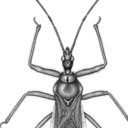Anti-diabetic activity of canophyllol from Cratoxylum cochinchinense (Lour.) Blume in type 2 diabetic mice by activation of AMP-activated kinase and regulation of PPARγ.
الكلمات الدالة
نبذة مختصرة
In the present study, the potential anti-diabetic activity of canophyllol (CNPL) and its mechanisms were investigated in vitro and in vivo. CNPL is a predominant friedelane-type triterpene extracted from young leaves of Cratoxylum cochinchinense ("Huang Niu Tea"). In vitro, CNPL increased GLUT4 translation in a L6-myotube model to 2.60-fold, and glucose uptake to 1.71-fold levels relative to untreated L6 myotubes. Moreover, compound C, an inhibitor of AMP-activated protein kinase (AMPK), completely suppressed the CNPL-induced GLUT4 translocation. In vivo, serum insulin levels, hyperglycemia, as well as other blood indexes of the KK-Ay diabetic mice were improved by a four-week oral administration of CNPL. Examination of its possible anti-diabetic mechanism showed that CNPL promoted the expression of p-AMPKα and GLUT4 in L6 myotubes. In KK-Ay mice treated with CNPL, GLUT4 expression was increased in skeletal muscle and white adipose tissue, and the levels of p-AMPKα were increased in the liver, skeletal muscle and white adipose tissue. Moreover, CNPL stimulated the expression of PPARγ to decrease and inhibited the activity of ACC by stimulating its phosphorylation in both liver and white adipose tissue, thereby indicating that CNPL also improved lipid metabolism disorders. Altogether, these results show that CNPL may improve glucose tolerance, reduce hyperglycemia, normalize insulin secretion, and ameliorate lipid metabolism disorders. The diverse anti-diabetic effects of CNPL may be attributed to the regulation of GLUT4, PPARγ, AMPK phosphorylation and ACC phosphorylation.



